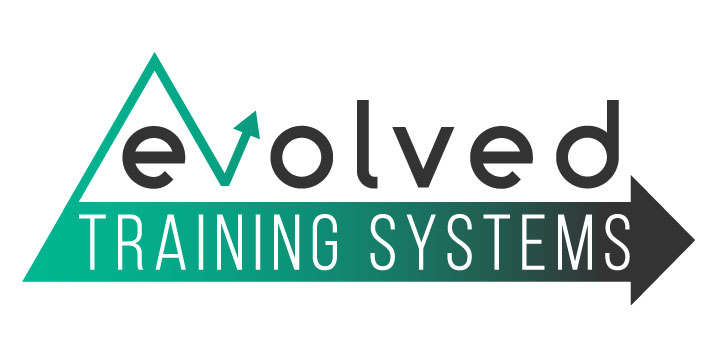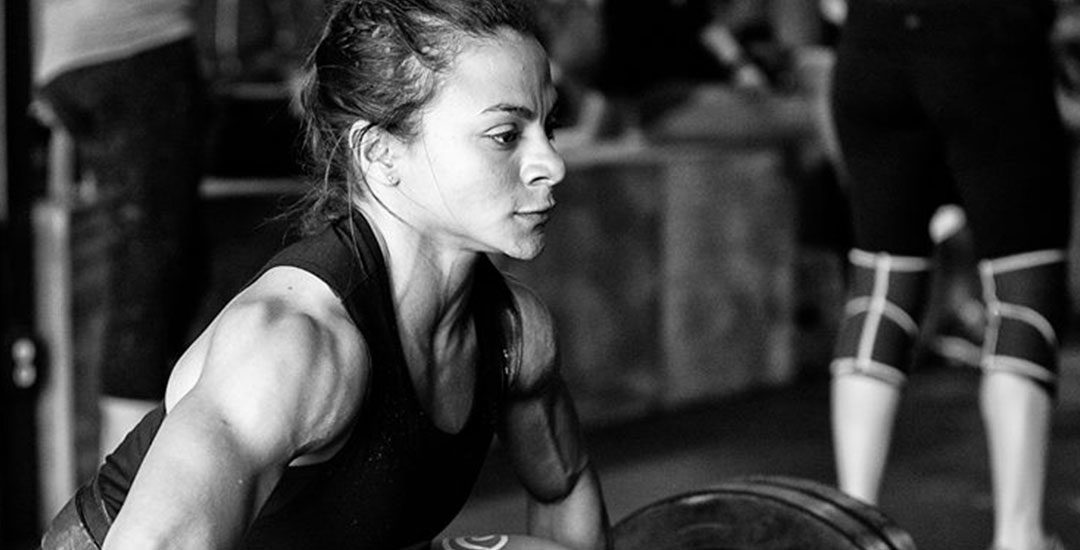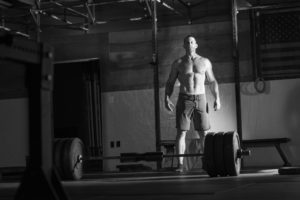With a small tweak, the same program can work for either goal
I love Mondays. I wasn’t always able to say this. In the past, Mondays were the most dreaded day, because it meant another 5-day work week in corporate America. Mondays now represent the beginning of another week where I get to hangout with my friends and an opportunity to help each athlete get a little bit closer to reaching their goals. Through these conversations, I am able to learn about each athlete as an individual – But I am also able to build a portrait of the larger picture.
As the “training intellect” of our athletes has increased in the last year, the larger picture has been slightly altered. Athletes at SDA have always been able to achieve incredible results following the general programs laid out for the gym. As athletes have advanced, we have accommodated by offering three different programs to meet the goals of each. Inevitably, this increased training intellect has created curiosity in our population, and some athletes desire a more comprehensive grasp on training principles.
I thoroughly enjoy this process of imparting knowledge. It is not my goal to hand you a piece of fish and feed you for the night, but rather to teach you to fish so that you can eat for life. Through teaching these principles, you will be able to take a general program template and make small changes to create an individual prescription for long-term success.
Recently, I had the pleasure of discussing training theory with one of these athletes. We will call him Shawn.
“Results have been fantastic!” Shawn exclaimed. “I have been adding weight to the bar in small increments each week, just like you suggested.” Shawn participates in both the Fitness and the Bodybuilding programs primarily, with an occasional foot wading into the realm of CrossFit.
“Great, love to hear that,” I said. “You’ve been working really hard and I can see your technique improving pretty much every day!”
Shawn paused for a moment, furrowed his brow, slowly glanced right, then left, as if he was pondering something big. He took a deep breath and then said “I guess I am just confused whether we are doing a strength program or a hypertrophy program.” He paused, and looked into my eyes, trying to determine if I was ready to respond. I wasn’t, so he continued. “Like, I always heard sets of 5 or less were more for strength, and that higher reps were more hypertrophy.” He looked to the ground. It appeared as if he wasn’t completely confident in asking that question, and was nervous for my response.
“That’s a really good question!” I told him. He smiled, no longer nervous. “There are so many variables that determine whether you are working on strength or hypertrophy. Rep scheme is one of these examples, but there are a number of other considerations, too. What is your primary goal?”
“Ok, well I guess I want to be strong, but I don’t want to be ‘fat-strong’ like the powerlifters. I want to still be able to have the mobility to do cleans and snatches, and I still want to be confident taking my shirt off.” He seemed defeated at what appeared to be an insurmountable amount of information that he would never know.
“No worries man,” I began. “I will give you examples of some of these variables, and then we can have a discussion afterwards to answer any questions you might still have.” He approved and we walked upstairs to the office, taking seats across from each other. These are some of my favorite times. I thrive on being able to give people the tools necessary to create their own success, and Shawn is like sponge.
“Alright dude,” I began. “The first variable is nutrition. If you want to gain strength or increase hypertrophy, you’ve gotta be eating slightly above maintenance calories.”
Shawn was a skinny guy. It was obvious he never struggled with being overweight at any time in his life, but he was also concerned about gaining unnecessary weight. He explained this to me, in similar terms.
“Yes Shawn, I know, but you still have to make sure your calories consumed exceed what you burn each day,” I explained. “If you look back in three months and you have added 20 + lbs to your main lifts, and gained 15 lbs of bodyweight, you have to be ok with it being 10 lbs of muscle and 5 lbs of fat.” He looked hesitant like I just told him he would never get laid again. “Don’t worry man, we can easily knock-off that weight when the time comes. It’s winter, so it’s the perfect time to do this.”
He looked relieved as he nodded. So I continued. “Anders created this awesome nutritional E-Book. It is 10 pages of quality information, and then it also comes with an Excel sheet. The matrix is built such that it tells you exactly what to eat at each meal based off your activity level and your goals, and it even breaks it down based on whether you train in the morning, mid-day or in the evening. Just make sure to put your activity multiplier higher since the goal is to gain weight. We can work on the specifics together.”
He looked excited as he said “oh wow, that is so awesome! You guys really go above and beyond!” I offered a shy smile. I knew Anders would dig that. “So what are some other variables?” He asked.
“Glad you asked, I was just about to get to it.” I smiled acknowledging his curiosity. “After making sure nutrition is on point, there are two important elements in the application of the program which determine whether it is meant for strength or hypertrophy.” I paused and looked at Shawn to make sure he was following along. He was leaning forward, focused, like a dog waiting to be fed.
“The first is total volume.” He knew that volume meant total amount of work performed, so I continued. “The standard program that is written for hypertrophy is 3 sets of 10 or something similar. This means you are performing 30 reps of work after warm-up sets.” He nodded. “A standard protocol for strength is to perform 3×3 or 5×3, or 5-4-3-2-1 or something along those lines.”
He interjected. “I knew hypertrophy work required more reps!”
“Not so fast,” I said. “In each of the strength models, the total work reps are between 9 and 15, so you are right in one sense.” He once again nodded, and it was obvious he was waiting for the ‘but’ that was coming. “But what you are not accounting for is the volume accumulated as a result of the ramp-up sets.”
He looked confused, as if he was doing some calculations in his head, and then just stopped and looked back at me, waiting for me to continue the explanation. “How many warm-up sets do you need to work up to a weight you can perform for 3×10?” I asked, leading him to the answer I wanted.
“Not much,” he acknowledged. “And clearly I need more warm-up sets to build up to heavy sets of 3 or 5 reps.” He seemed impressed with his deduction.
“Exactly,” I continued. “All of that contributes to volume. Furthermore, what if I told you to perform 10 sets of 3, instead of 3 sets of 10?” He furrowed, looked to the side, and looked back at me, and raised his eyebrows as if to tell me to continue. “If you were to perform 3×10 at 165 lbs, that equates to 4,950 lbs of volume, calculated as 165 lbs x 30 reps.” He understood. “Imagine if you were to perform 10 sets of 3 at 200 lbs. Now we have a total volume of 6,000 lbs for the same 30 reps. Using only one movement, assuming the movement is performed weekly, that would mean more than 50,000 lbs of volume for that single movement over a year. Now imagine if you did this for 8 different movements….”
I couldn’t even finish, because he was stammering and interjected to say, “holy shit man, that’s like…. Like… oh, man, like it’s gotta be something like 400,000 lbs!” He was giddy.
“Yeah, exactly, it’s a lot more volume,” I confirmed. “But unfortunately, it doesn’t work like that, really. You can’t just flip every exercise and think you’ll have enough time and recovery ability to do this for every movement in the program.” He looked like he had just created the world’s largest gum bubble, only to have it popped all over his face. “The smart athlete will choose one movement to perform as 10×3 in each cycle, and then change the movement in the next cycle.”
He seemed to understand, but still looked deflated. He slumped back in his chair. “Look man,” I said. “I understand the desire is there, but it’s important we temper desire with intelligence.” He nodded and game me a soft sideways smile. “I want to tell you about one other variable that can be used on all movements in the program to cater the program towards strength or hypertrophy.”
He was once again all ears as he rose from his slumped position and leaned in to make sure he didn’t miss anything. I began to explain. “The way in which you perform your ‘ramp-up’ sets has a large impact on strength vs hypertrophy. We now know that hypertrophy requires more volume,” I reminded him. He acknowledged. “On the other hand, strength work is primarily neural in its response.” To this statement, he looked confused, so I explained further. “This adaptation is a result of the nervous system becoming more adept at performing the task. It’s creating motor memory and becoming more proficient at the movement.”
Before I could continue, Shawn jumped in and exclaimed, “Like Olympic lifting!!”
“Exactly,” I confirmed. “That’s a perfect example, Shawn!” He got it. “Just like Olympic lifting movements, your technique improves, you learn the proper bar path, and refine the most opportune time to explode, such that the weight moves more quickly and accurately. This manifests itself in increased strength.”
He nodded once again, and then inquired, “OK, so how do my ramp-up sets effect this?”
I began to explain. “You see, the same neural adaptations take place in all movements. In a bench press, it’s the timing and positioning of reversing direction, squeezing the butt, and creating full-body torque on the barbell. Same thing with Deadlifts, Strict Press, Dips, and every other movement performed. But it is difficult to create these neural adaptations.The key is to perform more ‘practice’ sets without incurring fatigue, whereas in hypertrophy we want to create more overall fatigue in the muscle in a given session.”
Shawn seemed confused, so I continued. “Let’s assume you are following the Fitness or Bodybuilding program, and you are working up to a heavy set of 5 reps for a Back Squat. What is your current weight for 5 reps?” I asked.
Shawn told me it was 265 lbs. “OK, to create neural adaptations, you have to really get the nervous system excited prior to your big set of 5.”
He told me to get to the point.
“After a thorough warm-up, which should include some aspects of being explosive, such as box jumps or broad jumps, you will begin specific warm-up sets performing the back squat. After 10-15 reps with the empty bar, we will move up to 135 lbs. It’s vital that each rep is like its own set. You can’t look at strength work as a set of 5 reps, but rather as 5 sets of 1, without racking the bar. You must win each rep against the bar by focusing all your energy into driving up as forcefully as possible, while maintaining perfect motor patterns. Nobody ever got better at a movement by performing it improperly.”
“I can do that,” Shawn told me.
“Good.” I said. “In an effort to keep fatigue low, you will perform multiple sets of light weight for reps of 5 or less. The point is to be explosive and powerful on each rep, and you can do multiple low-rep sets without even coming close to failure. Once the nervous system is amped up and the bar is flying up, you will continue priming the nervous system with 5 more sets; reps of 5-4-3-2-1, increasing weight, such that the top single is about 10% heavier than the weight you intend to use for your top work-set of 5 reps. For you, that 265 x 5 will feel much lighter after you’ve felt 285 or 295 on your back for a single rep.”
“Ok, I like it,” he said. “So what would be the change if my goal was hypertrophy?”
“For Hypertrophy, it is substantially less important to avoid fatigue. In fact, as we discovered earlier, volume and fatigue are the keys to success for hypertrophy. The nice part about hypertrophy, is that we can perform more work with lighter loads, and this has been proven to be extremely effective. It is also often easier on the mental state to know you don’t have to lift maximal weights to still achieve your goal.”
“I like that!” Shawn proclaimed. “I can’t tell you how many times I get scared before a session where I know I have to increase weight when I barely made it the prior week.”
“Yes, that is definitely one element,” I confirmed. “So, using the same 265 x 5 back squat PR, after the warm-up, we would take the following approach for hypertrophy: Reps of 15-12-10-8-6-4, increasing weight, such that the set of 6 reps would be at about 225 lbs. In this scenario, you’ll probably end up only using 245 for your final set, instead of 265. The number of reps at 245 isn’t quite as important, because you have created serious fatigue during the ramp-up sets. If you did the math on total volume, you would see that this model has substantially more.”
Shawn’s eyes were wide open, mouth gaping. He couldn’t quite believe that the two approaches were so different.
“Look, Shawn,” I continued. “You are making great results, and have been extremely dedicated. It doesn’t surprise me that you want to learn more. The point of all this is to help you understand that within the framework of a general program, you and all the other athletes at SDA can individualize the same basic program to meet your specific goals.”
“Oh man,” Shawn said. “I feel like I want to tell the whole world about this! You should totally write a blog post so everyone else can learn this incredible information, too!!”
People like Shawn make Mondays so enjoyable. I live to help each athlete tweak minor details, and instill habits for life to ensure they can hit their goals through continued progress over time. And with that, I replied to Shawn, “I think I will….”




